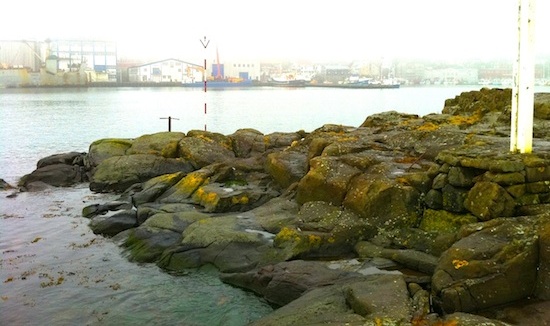01 Apr And you think OUR legislature has a history?
In the last few years, I’ve made several business trips to the Faroe Islands, a rocky archipelago that rises spectacularly from the North Atlantic, about halfway between Iceland and Scotland. The population of 48,917 is about one-third of Cape Breton’s; the land area of 1,399 square km barely tops that of Richmond County, NS.
Search Google Images for “Faroe Islands,” and you’ll turn up dozens of photos far more beautiful than the snapshot below, of a rocky point known as Tinganes that sticks into the harbour at Torshavn, the country’s* largest town. Tinganes sits two blocks from the hotel where I stay, and there’s a reason I walk out to it on every visit.
On this spot in the year 999, island chieftans gathered for the first meeting of the Faroese Løgting, or parliament. The islands have seen many changes in the centuries since this historic gathering, but the Løgting still meets, 1012 years later, in a modest building just up the hill from where I snapped this photo Thursday.
This is apparently not the record for world’s oldest parliament, but it’s right up there. For a resident of the province that claims Canada’s oldest responsible legislative body, at 153 years, it seems a milestone worth noting.
Today, the Løgting has 33 MPs, split among six political parties, the largest of which holds only eight seats. There are rumblings this week of a seventh party, as a prominent MP threatens to bolt the Fólkaflokkurin, or Conservative Party, one of three parties making up the shaky ruling coalition.
—
* Technically, the Faroe Islands constitute a semi-autonomous “constituent country” of the Kingdom of Denmark, with whom it shares a long, disputatious history (see: rape, pillage). Standard Faroese political theory attributes the large number of parties in the Løgting to the overlay of two distinct political spectrums: left vs. right, and those favoring total independence from Denmark vs. those favouring union with the colonial overseer.

